 Facebook
Facebook
 X
X
 Instagram
Instagram
 TikTok
TikTok
 Youtube
Youtube
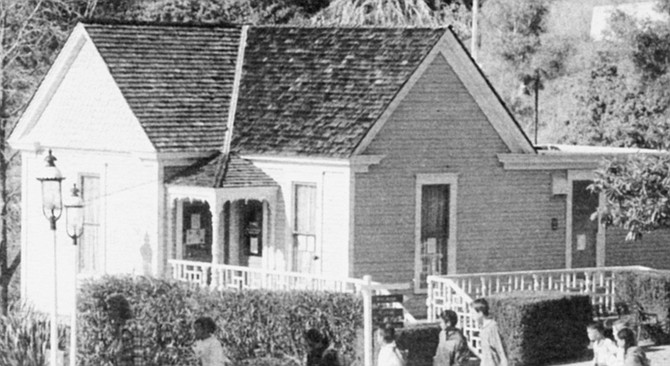
WHERE TO SEE THEM
Following is a listing of 20 extant Victorian residences. Only Villa Montezuma and the six houses in Heritage Park (a 7.5-acre county-owned lot at Juan and Harney Streets, adjacent to Old Town) are open for public exploration.
1. TORRANCE HOUSE (1887) 136 Juniper Street

A large Queen Anne built for Elisha Swift Torrance, a prominent San Diego attorney who later became a superior court judge. The house has a gabled Dutch roof and many patterns of ornamental shingles. Today its exterior is painted pale yellow with a vibrant maroon and white trim. It is well- maintained.
2. WATTS HOUSE (1896), 1767 Second Avenue

A modest one-story Italianate/Stick-style cottage owned by H.E. Watts. The house stood at Seventh Avenue and C Street before it was moved to its current location sometime prior to 1906. It features a hipped roof and three hexagonal bay windows whose shape matches that of its front door. Its light blue exterior (which is similar to that of Sherman-Judson house) is well-maintained.
3. MUMFORD HOUSE (1885), 1929 Front Street

A two-story Stick/Eastlake style house built by Joseph S. Mumford and restored by the founder of SOHO, Robert Miles Parker. Its second story boasts fish-scale shingles, and its large windows sport art glass. Today, its exterior is well-maintained.
4. LONG-WATERMAN HOUSE (1889), 2408 First Avenue
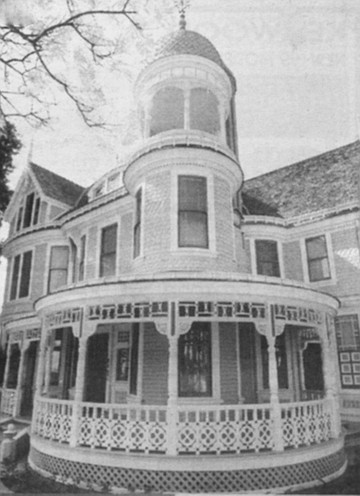
Architects Benson and Reef designed this exuberant Queen Anne for John Long, the head of Coronado Fruit Package Company, and his wife Kate. The three-story redwood home sports a curved veranda and tall tower with curved glass windows. Today its exterior is well-maintained.
5. HAYWARD-PATTER-SON HOUSE (1897), 2148 Broadway
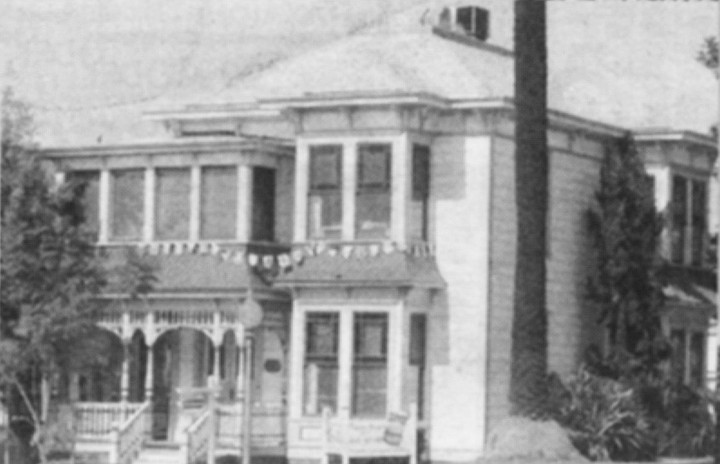
This Italianate house may have been designed and built by Albert Moses Hayward, a carpenter, promoter, builder, rancher, and speculator, who later became president of the San Diego Yacht Club. The house was later owned by Francis Patterson, who ran a Fifth Avenue camera store. As of February 1999, this house was for sale. It had a second-story broken window but displays an otherwise well-maintained exterior.
6. CHRISTIAN HOUSE (1889), Heritage Park
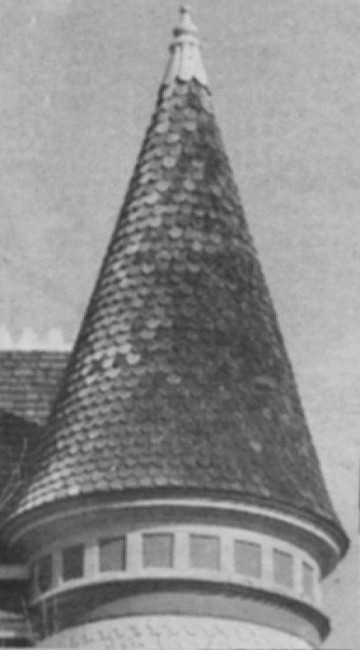
Hartfield Timberlake Christian and his wife Myrtle resided at this Queen Anne, which once sat at 1940 Third Street, just north of Horton’s New Town. Christian was the founder of the Title Insurance Company and a signer of San Diego's original city charter. He also served as city clerk and assessor. The house sports ornately detailed Queen Anne trim — fish-scale shingles on its turret and oriental fretwork on its outside banister. Its front porch wraps around one side of the building. The Christian House was moved to Heritage Park in 1989.
7. BRITT HOUSE (1889), 406 Maple
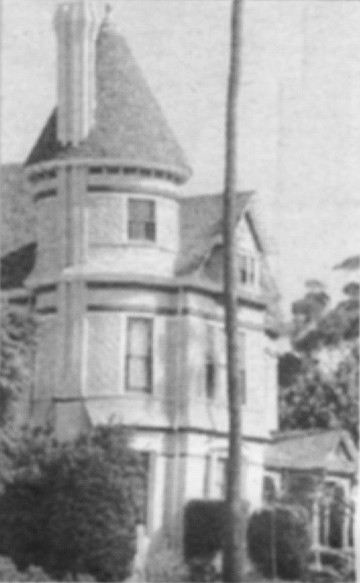
Another prominent San Diego attorney-turned-judge named E.W. Britt built this nine-room Queen Anne and later sold the residence to newspaper magnate W. Scripps, for use as a townhouse while Scripps's Miramar Ranch was under construction. The three-story home had a brick chimney, a circular corner tower, and many-patterned shingles. Inside was a grand staircase. Today, the house's exterior is well-maintained.
8. BURTON HOUSE (1893), Heritage Park
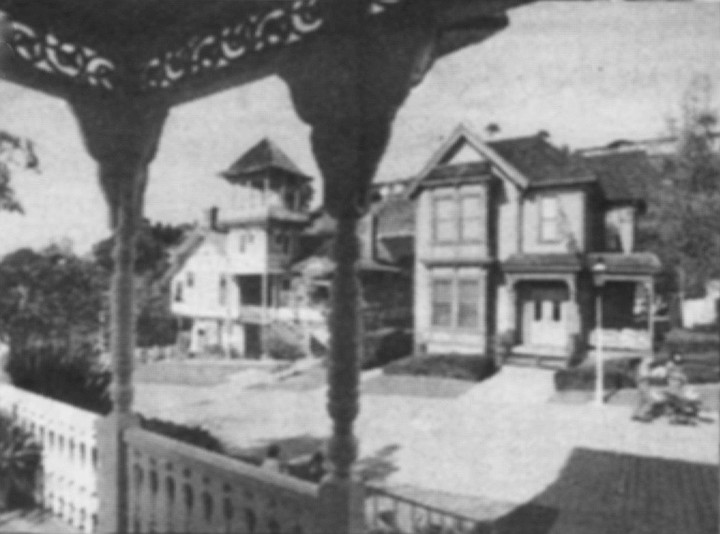
Near the turn of the century, retired Army ophthalmologist Dr. Henry Guild Burton lived in this Victorian/Classical Revival home at 1970 Third Avenue. The house sports a hipped roof with three gables. It was moved to Heritage Park in 1976.
The following are private residences and businesses:
9. McKEE HOUSE (1895) 2460 B Street
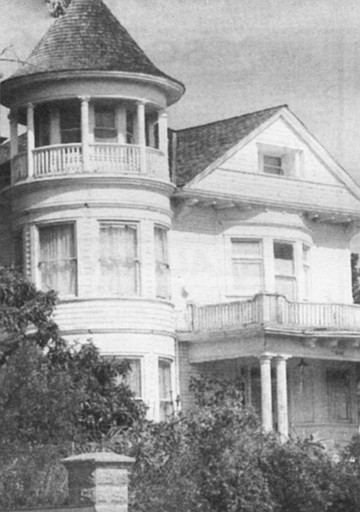
A late-century Queen Anne/Classical Revival built for Clark McKee, the founder of First Abstract and Title Co. in San Diego. The house features a round three-story tower with witch’s cap and curved glass windows. It has a second-story curved balcony and a front porch that sports double Doric columns. Although there is much overgrown foliage in front of the house today, it is still visible from the roadside. Its exterior is adequately maintained.
10. QUARTERMASTER-WILDE HOUSE (1896), 2404 Broadway
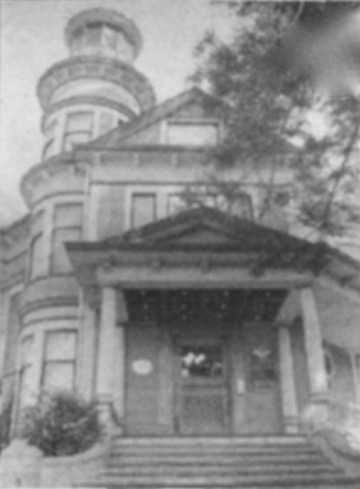
A very large Queen Anne/Classical Revival, one of the first and largest of its kind in Golden Hill. Built for Reuben Quartermaster, a department store owner, it sports a four-story circular tower with a domed top and curved glass windows. Doric columns frame its entrance. The 8800-square-foot home featured a formal parlor, dining room, kitchen, and solarium on the first floor and five bedrooms and two bathrooms on its second floor. It also once contained the first shower in San Diego County. Today, it is well-maintained and houses the Law Offices of Milton J. Silverman.
11. VILLA MONTEZUMA (1887), 1925 K Street
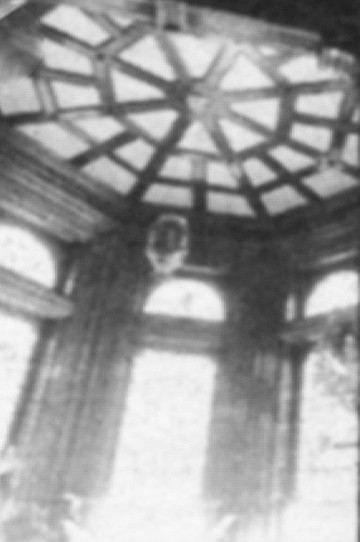
A Moorish Queen Anne fantasy that was branded by Victorian historians Elizabeth Pomada and Michael Larsen “one of the most artistically designed home museums in the country." Nearly 100 years prior, the San Diego Sun similarly proclaimed it "the most ornately furnished and artistically furnished house in the city...itself a museum."
The Villa was built for musician/author/spiritualist Jesse Shepherd at a then-kingly sum of $19,000. The house boasts some of the finest residential stained glass windows in the West, an Arabesque tower, dark polished redwood and walnut walls, and five tile-faced fireplaces. An accidental fire in 1986 caused extensive damage to the property, but through careful restoration work, the San Diego Historical Society was able to reopen the home to the public by the Villa’s centennial birthday in June 1987. The Villa’s lavish interior has been lovingly reproduced by the Society. For a $5 docent-led tour of the home, call 619-239-2211.
12. SHERMAN-DOIG HOUSE (1887), 136 West Fir Street
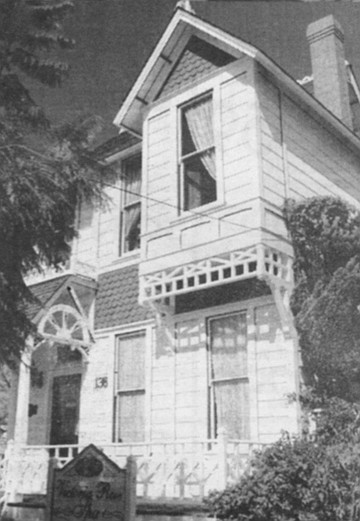
This middle-class Stick-style Victorian home was created as a "modified farm house in the city" by builder John Sherman and designer J.C. Schroeder. It has two entry porches, a steeply pitched roof, and projecting bays. Today, it houses the Victoria Rose Spa. Its exterior is well-maintained.
13. SHERMAN-GILBERT HOUSE (1887), Heritage Park
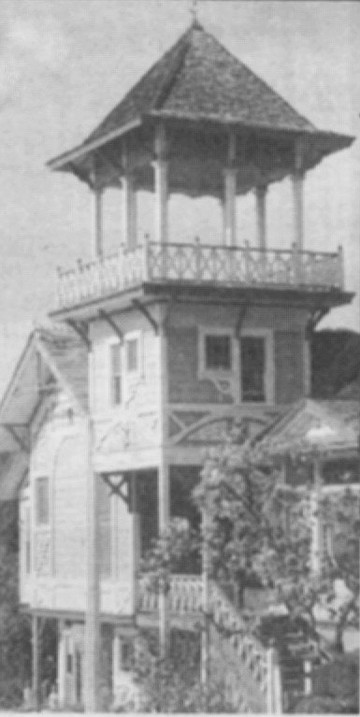
This Stick/Eastlake house, which stood at the southeast corner of Second and Fir, was designed by Comstock and Trotsche for John Sherman, a cousin of General William Tecumseh Sherman. From 1892 until 1965, the home was inhabited by sisters Bess and Gertrude Gilbert, who held receptions there for internationally famous entertainers such as Yehudi Menuhin, Anna Pavlova, Arthur Rubinstein, and Marian Anderson, who spent the night there after being denied lodging at the El Cortez Hotel during WWII.
The Sherman-Gilbert House sports a square tower and a pitched and gabled roof, lopped by one of San Diego’s only widow's walks. It was moved lo Heritage Park in 1971, after narrowly escaping razing to make way for Center City Hospital's parking lot.
14. RYNEARSON HOUSE (1897), 2441 E Street
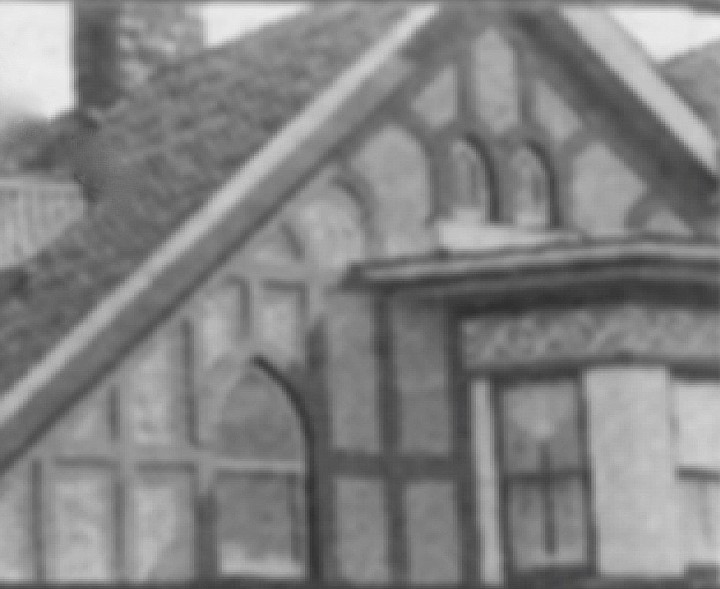
A large “Vernacular’' Victorian sporting Carpenter-Gothic arch-shaped windows and trim but also Classical Revival-style Corinthian columns at its entrance and Doric columns at its side porch. Built for Samuel Rynearson, the home cost $5,000 and boasted five bedrooms and a large bath. Today it is well-maintained and is surrounded by several other nicely restored Victorians.
15. FAULK-KLAUBER HOUSE (1888), 3000 E Street
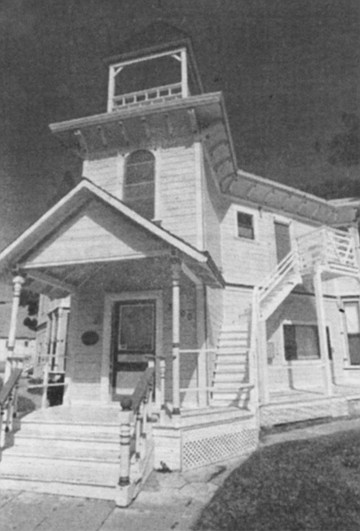
This Italianate-influenced residence was built by sawmill owner M.D. Faulk, who used redwood from his own mill. Abraham Klauber bought it in 1892 and lived there with his family until 1921. The house's interior featured stained glass windows and carved redwood doors. Today, it sports a few-anachronistic 20th-century details, such as Levelor blinds and a 1980s-style gold-plated mailbox.
16. BUSHYHEAD HOUSE (1887), Heritage Park
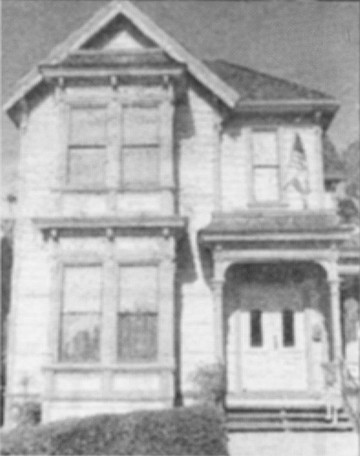
An Italianate Victorian built as a rental property at a cost of $3000 for Edward Wilkerson Bushyhead, an early San Diego sheriff, chief of police, and San Diego Union newspaper owner of Cherokee descent. The house once stood at 232 Cedar Street. It features two-story protruding bay windows and a low-pitched roof. It was moved to Heritage Park in 1976.
17. SENLIS COTTAGE (1886), Heritage Park
Built for Eugene Senlis, a gardener employed by San Diego horticulturalist Kate Sessions, this vernacular cottage once stood at 1536 Second Avenue. It was purchased by Senlis and his wife for $1200 and is an example of a late-19th -century Victorian working-class home.
There were four rooms (a kitchen, parlor, and two bedrooms), totaling 672 square feet. At the tune Senlis occupied it, the house was without gas, electricity, water, or plumbing. The house was moved to Heritage Park in 1981.
18. SHERMAN-JUDSON HOUSE (1887), 1930 First Avenue
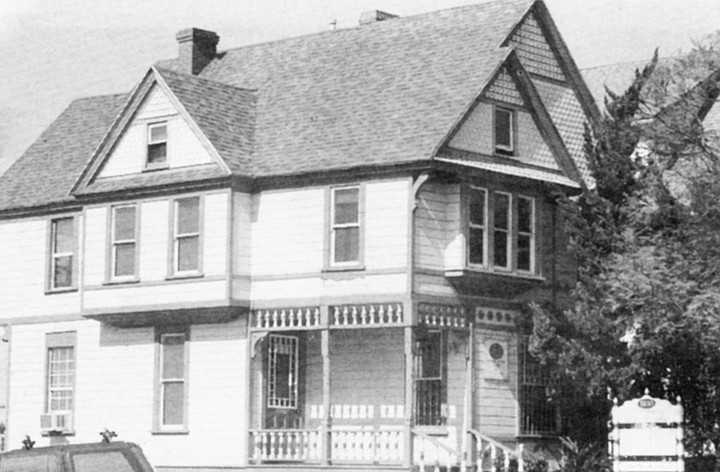
This two-and-a-half-story Queen Anne/Stick house was built by John Sherman as a middle-class rental. The original home had three bedrooms, three baths, a parlor, kitchen, sitting room, and main entry. It has a steeply pitched roof and varied decorative trim. Today, it houses the Law Offices of Joseph Rosati Its pale-blue exterior well - maintained.
19. McCONAUGHY HOUSE (1887), Heritage Park
This two-story Stick/Eastlake house once stood at 1569 Union Street at Cedar in an early tract called Middletown. It was built for John McConaughy, who founded the first scheduled passenger and freight service in San Diego County. McConaughy‘s four-horse passenger stagecoaches and six-horse wagons traveled regularly between San Diego and Julian. The house was moved to Heritage Park in 1981.
20. WELDON-GLASSON HOUSE (1880s), 3139 Franklin Avenue
This small Cottage Victorian was built for James T. Weldon. Four Ionic columns grace its front façade. A ship's cabin cupola sits above its roof. The Weldon-Glasson House's grounds were once dotted with pools, rockwork, a wishing well, a waterfall, and copies of Greek and Roman sculpture. Cages and tanks held birds, monkeys, and alligators. Today, however, the house has sheets over its windows and vehicles parked on its adjoining lot.
HOW THEY GOT HERE
The colorful, romantic structures known as Victorian houses became popular during the reign of Britain's Queen Victoria, from 1837 to 1901. They established residence in San Diego in the latter part of the 19th Century, particularly after the railroad reached San Diego in 1885. At that time, a wild land boom was beginning, which caused the city's population to jump from 5000 to nearly 41,000. At the boom’s peak in 1887, 3000 to 5000 people were arriving in San Diego by rail and ship each month. Most had taken advantage of the Santa Fe and Southern Pacific Railroads’ rate war, which had lowered one-way hires from $125 in 1885 to $1 by 1887. They erected homes (which typically cost between $500 and $5000) east of Balboa Park in Golden Hill and to the north near the Florence Hotel, which stood between Third and Fourth, and Grape and Fir.
But by 1888, San Diego's land boom had busted because industry had not kept pace with the city’s population. Within months, San Diego’s number of inhabitants plummeted precipitously to 16,000. Those leaving the city withdrew over $2,000,000 from its banks.
THE WAY THEY WERE
During the Industrial Revolution, the Victorian home became a welcoming shelter away from the hustle and mechanized routine of worklife. “Home Sweet Home" became a well-loved saying. Houses were protective castles whose striking silhouettes and colorful exteriors reflected the era's romantic mood and optimism. Some of the more popular styles of Victorian houses, which still can be found in San Diego, are described below:
Carpenter Gothic Victorians (1830-1860) were cottages with Gothic design influence, such as arched windows like those found on French cathedrals. Many were painted gray or fawn (yellow-brown) and had lacy trimwork. Very ornate Carpenter Gothic homes were sometimes called "Steamboat Gothic,” for they resembled a “moored” version of the fancy boats that cruised America's waterways.
Two-toned Italianate Victorians (1840-1880), whose style was first introduced in Scotland and England during the 1830s, became more popular than any other home style in America during the mid-19th Century. They evolved from the larger, simple-fronted Italian Villa or Tuscan style (1830-1880) homes that preceded them. However, Italianate Victorians didn't debut in San Diego until the advent of the city’s land boom in the late 1880s.
Italianate Victorians were rectangular shaped, almost square, and typically one to two stories in height (Italian Villa-style homes tended to be larger). They had low-pitched roofs with very wide eaves. Some had cupolas at their roofs’ centers. First-floor windows were tall and narrow. Central entrances sported Doric or Ionic columns and had narrow verandas double glass-paneled doors, and second-floor balconies.
Stick/Eastlake houses (1860-1890) were the most richly decorated of the Victorians. Those in seaside communities were painted flamboyant color schemes such as brown and yellow, cream and maroon, or even a wild amalgamation of grays, yellows, pinks, reds, and olives. The homes featured asymmetrical silhouettes and decorative “stick work" — horizontal, vertical, and diagonal wood strips that were placed over shiplap siding Many had steeply pitched gabled roofs. Some larger structures’ upper stories overhung lower stories, to form large shaded verandas.
Queen Anne Victorians (1880-1900) had their origins in England during the late 1860s. They were first introduced in America at the Philadelphia Centennial Exhibition of 1876, then were widely publicized in magazines and newspapers. Known for the gingerbread — ornate trim — upon their porches and gables, they were the late 19th Century’s most picturesque home style. The advent of the lathe and power jigsaw made possible their intricate decorations.
Queen Annes were painted three body colors and one major trim color offset by a dark sash of deep red, green, or black. However, by the 1890s, their color palette was softened. Their roofs had highly irregular silhouettes due to their array of gables, dormers, tall chimneys, towers, turrets, and pinnacles. Corner towers with “witches’ caps” were essential elements of this style, as were expansive first-story porches that wrapped around the houses. Many had ornate stained glass windows, marble fireplaces, and grand staircases. Shingles were diamond-shaped, round, square, fish-scale, sawtoothed, or a busy combination of several styles. All Queen Annes sported asymmetrical floor plans.
Most Victorian homes contained a potpourri of furniture styles: heavy Gothic-style pieces of rosewood and oak; more delicate Rococo Revival pieces with carved fruits, flowers, birds, and vines; and ponderous Renaissance Revival furnishings that sported medallions, pediments, and scrolls.
The parlor, which was used to entertain guests, was the most elegant room of the Victorian residence. It had light-colored walls — usually either pink, gray, or green — so it wouldn't seem dreary in the evenings, when it was illumined only by candlelight, fireplace, or kerosene lamps. The mom's tiled or carved woodwork fireplace cast a warm romantic glow at night and heated the room. However, with the advent of gasoliers (hanging lamps fueled by natural gas) and electric lights, deep warm wall tones of russet, peacock blue, plum, olive, terra cotta, gold, and pumpkin came into vogue.
Parlor woodwork was painted a matching darker shade than the room's walls. After the 1840s, when machine-made wallpaper was introduced, middle-class parlors then sported (rut-terns with landscape scenes, ashlar papers that resembled stone, and flocked or velvet papers that looked like damask fabric.
An embossed paper called Lincrusta, introduced by Frederick Walton in 1877, became very popular in the late 19th Century, particularly in Victorian entryways. It was a linseed-oil material backed with canvas that resembled elaborate plasterwork. Anaglypta, a lighter-weight fiber-backed paper that looked like stamped leather, was marketed ten years after Lincrusta and also added an elegant touch to middle-class parlors.
Parlor floors were either painted or covered with floorcloth, druggets (coarse wood cloth, wood, or flax), matting, or wall-to-wall carpeting, which had become affordable after 1850. Wealthy homeowners either covered their floors with Wiltons or Brussels pile carpets or installed parquet flooring when hardwood floors came back into vogue after 1870. Middle-class homeowners sometimes opted for parquet borders or stained softwood flooring which gave the appearance of hardwood.
Parlor ceilings were painted lighter shades than its walls — oftentimes lavender, peach, gray, or blue. Some ceilings featured two-foot diameter medallions of wood, papier mâché, or plasterwork, from which hung elaborate chandeliers.
Window dressings of the Victorian era were elaborate. They consisted of a series of shades, undercurtains, valances, and ornate draperies of velvet, brocade, and cotton damask, which kept sunlight from fading rugs, furnishings, and wall coverings. Stained glass windows added to the room's airiness. Within the parlor were crowded furnishings: a tall corner stand called an étagère, for the display of mementos. Oriental rugs, and chairs covered with fringed shawls. Crocheted doilies were placed over the backs of chairs to protect the headrests from the macassar oil that men wore in their hair.
The sitting room was separated from the parlor by wooden pocket doors or by the front entryway. It was a private area for family gatherings. In contrast to the formal parlor, its ambiance tended to be feminine and light. Walls were painted shades of rose, blue, or light gray, or were adorned with cheerful-patterned wallpaper.
A low divan (a backless couch without armrests) covered with pillows was surrounded by rockers, easy chairs, and perhaps an overstaffed, tufted Turkish chair in an exotic fabric.
As the turn of the century neared, the functions of the parlor and sitting room merged, and the two rooms became one — the living room.
Victorian dining rooms contained massive buffet pieces and Renaissance Revival sideboards, some of which stood eight feet tall. Tea carts were used to wheel food and drinks to the large dining table, after the victuals were hoisted by dumbwaiters from the downstairs kitchen. Many dining rooms sported tin ceilings with elaborate Gothic, Renaissance, or Rococo designs.
Kitchens were located in the basements of early Victorian homes, as were pantries for storing foodstuffs and cookware, and sculleries (laundry areas) where food was prepared and wash was done. These rooms' soft pine floors were painted gray, dark green, dark red, or mustard yellow. More expensive homes had brick kitchen flooring After the mid-1800s, durable oilcloths — which were stretched, coated with paste, painted, and varnished — were laid atop wooden floors. They remained popular even after the introduction of tile, which was easy to clean but costly.
On the second floors were the bedrooms, whose walls tended to be pastel-colored or wallpapered. Beds were covered with crazy quilts (made from fabric remnants) or comforters. On chilly nights, families used bedwarmers (long-handled metal pans containing hot coals) to heat their sheets and blankets.
Bathrooms began to replace outhouses in most middle-class urban homes by the 1860s. Early Victorian bathrooms were elegant; some even had fireplaces and stained glass windows. Their tiled floors were covered with Oriental rugs, wallpapered walls decorated with artwork, and darkwood-paneled bathtubs. Later bathrooms contained the still-popular porcelain clawfoot tubs. Toilets had wooden ceiling-mounted tanks, which flushed via a pullchain.
The Victorian mansions of the rich had many other rooms, such as solaria, studies, and music rooms. Early 19th-century home libraries were painted in shades of subtle gray or blue. Later ones were painted deep reds, greens, or purples. Their windows were shuttered, so that the master of the house could smoke a cigar or pipe without damaging curtain materials. Some estates (and even many smaller homes) had separate smoking rooms for the men, who would attend to their tobacco while dressed in special jackets and velvet caps, so as not to get smoky odors on their clothes and in their hair.
THE VICTORIAN HOUSES' FATE TODAY
At the turn of the century, Victorian houses began to fall out of favor, as home buyers opted for the cleaner-lined Classical Revival-style homes that had been introduced at the 1893 Columbian World’s Fair in Chicago. The once-adored Victorians were soon branded “outdated," “unfashionable,” and “hard-to-maintain.” By the 1920s, many of them were remodeled or covered with asbestos shingles or stucco to hide their gingerbread. Others were demolished.
Luckier ones were converted into apartment units, bed and breakfasts, offices, and businesses. Only a very few, particularly in San Diego’s Sherman Heights, Banker’s Hill, and National City areas, were lovingly maintained by their succession of owners and sheltered from major remodeling jobs throughout the years.
It wasn’t until the late 1960s that San Diegans became very interested in preserving the remaining Queen Annes, Carpenter Gothics, and Italianate homes in their midst. Due to public outcry, some of these vintage homes were moved to new sites in order to save them from the wrecker's ball. But Bruce Coons, president of San Diego's Save Our Heritage Organisation (SOHO), suggests that, when at all possible, such homes should be kept at their site of origin. “Taking a house out of its original context destroys information, like how the cases, city grew," he says. “In some cases you’re also taking away a neighborhood’s landmark."
Today, Victorians are back in vogue, and well-maintained ones fetch premium prices when placed up for sale. “Neo-Victorians’ — contemporary homes styled like Victorians — also are gaining popularity. Developments of Neo-Queen Annes are springing up throughout the United States, as other far-sighted builders peddle Victorian floorplans to aspiring home buyers by mail and Internet.
CARE AND FEEDING OF VICTORIANS
Current-day homeowners who are mulling over restoring their Victorian homes should beware of Murphy’s Law of Restoration: the work will take twice as long and cost twice as much as expected. Elizabeth Pomada and Michael Larsen, authors of America’s Painted Ladies (Dutton Studio Rooks, 1992) add that restoring a Victorian home means never having to say you’re solvent. Costs of restoration depend upon a house's condition and size, as well as its owner’s desire for historical accuracy. Adventurous types who undertake the jobs themselves may spend $10,000 to $13,000 total...or annually for materials. Others who hire tradespeople might spend $10,000 up to “millions," depending on their house’s present condition, size, and their own wealth and aspirations. Of course, “touch-up jobs"— restoring one room or repairing a porch with dry-rot — will be far less expensive.
Nonetheless, undertaking a restoration job can he rewarding and exciting. Rurik Kallis and Bruce Coons can attest to this. Both SOHO members restored Victorians themselves. Kallis, a restoration carpenter by trade, purchased the 2300-square-foot Sunset View Ranch in Lemon Grove, which had been built in 1895. He estimates that he spent $15,000 total on materials from 1971 to 1983, when he completed his restoration work. During those 12 years, Kallis conducted extensive research about his house's history and managed to locate descendants of 6 of the 11 families who once lived there. From these families, Kallis obtained old photographs of his home, which helped him restore the house more accurately. On evenings, weekends, and vacations, Kallis labored on his historic home, while his wife, Marjorie, assisted by staining and varnishing wood.
Bruce Coons says he and his wife spent nearly ten years completing an “exact period restoration" of San Diego’s Kimball House. He estimates that he spent between $5000 and $10,000 on each of the house's 12 major rooms. “We matched woodwork, color, and grain. We used 13 different wallpapers," he says. “Our bathroom had all antique fixtures, even down to leather washers. But honestly, I don't know if I’d go to that length again, if I had to do it all over."
Whether undertaking the work themselves or shopping for skilled tradespeople, Victorian homeowners should first study the Standards for Rehabilitation and Guidelines for Rehabilitating Historical Buildings published by the Secretary of the Interior. It offers ten standards (“do’s and don’ts") for undertaking a historical restoration. Some stipulations may surprise readers — for example, any additions to historic structures must be built to look different from the original building. This is so that the structure won’t appear larger than it had been during the period of its historical significance, according to Barbara Ruchholz, co-author of Successful Homebuilding and Remodeling (Dearborn, 1999). Homeowners who abide by their municipal restoration regulations also may be entitled to property-tax assessment reductions, freezes, and/or other financial incentives during the time they rehabilitate their homes.
Bob Vranizan of CVC, a San Francisco firm specializing in Victorian restorations, cautions that homeowners who wish to hire architects or craftsmen to do their renovations be sure they employ reputable tradespeople who have experience in such historical work.
“Think the job through first," adds Jay Turnbull of Page & Turnbull, Inc., another San Francisco-based restoration firm. “One of the snags you can run into is getting started and then finding the job larger, more complicated, and more expensive than you first thought.”
A few select homeowners decide to restore their homes with strict historical accuracy, reproducing every original detail of their Victorian abodes. Such an undertaking, says James Mannix, can cost as much as triple what more typical restoration jobs would cost. To begin this work, the homeowners must collect photographs of the house in its original state, gather extant materials (wallpaper, carpeting, fabric) or scraps, cut through paint layers, sand the first layer with fine sandpaper, lubricate it with colorless oil, and examine it under a magnifying class to discover its true color. But even then, they may only view a murky mixture of age, degenerating paint, and primer. Restoration experts recommend that these homeowners have their paint chips micro-analyzed for chemical and spectrographic findings. But this undertaking can cost more than $50 per sample.
A good exterior paint job will last five to ten years, experts say. Before California passed its stringent paint-production laws, which banned lead and restricted the volatile organic compounds used in paint, exterior coatings on Victorians could last 15 to 20 years, says Bradley Brisk, a restoration painter. “They’ve taken the guts out of paint," says Brisk, who recommends acrylic paints for the job, because oil-based paints tend to yellow and become brittle after only a year. Variations in sheen can add dimension to the Victorian home’s new paint job. For example, satin paint can be used for the main body of the house, while semigloss may be applied to the major trim, and flat paint can be used to accent small details. Subtle color schemes are recommended for Victorian homes with elaborate architecture. Conversely, those homes with simpler facades come to life with exuberant colors.
“Just maintaining the paint on a Victorian can be costly," says James Manna of San Francisco Restoration. “That's why stucco and aluminum siding people had been so successful in selling their products to homeowners. They’d say. ‘Oh, you won’t have to paint again for another 50 years.'" But, he adds, many Victorian homeowners later regret their decision. And by then, removal of the stucco and siding prove to be similarly expensive.


WHERE TO SEE THEM
Following is a listing of 20 extant Victorian residences. Only Villa Montezuma and the six houses in Heritage Park (a 7.5-acre county-owned lot at Juan and Harney Streets, adjacent to Old Town) are open for public exploration.
1. TORRANCE HOUSE (1887) 136 Juniper Street

A large Queen Anne built for Elisha Swift Torrance, a prominent San Diego attorney who later became a superior court judge. The house has a gabled Dutch roof and many patterns of ornamental shingles. Today its exterior is painted pale yellow with a vibrant maroon and white trim. It is well- maintained.
2. WATTS HOUSE (1896), 1767 Second Avenue

A modest one-story Italianate/Stick-style cottage owned by H.E. Watts. The house stood at Seventh Avenue and C Street before it was moved to its current location sometime prior to 1906. It features a hipped roof and three hexagonal bay windows whose shape matches that of its front door. Its light blue exterior (which is similar to that of Sherman-Judson house) is well-maintained.
3. MUMFORD HOUSE (1885), 1929 Front Street

A two-story Stick/Eastlake style house built by Joseph S. Mumford and restored by the founder of SOHO, Robert Miles Parker. Its second story boasts fish-scale shingles, and its large windows sport art glass. Today, its exterior is well-maintained.
4. LONG-WATERMAN HOUSE (1889), 2408 First Avenue

Architects Benson and Reef designed this exuberant Queen Anne for John Long, the head of Coronado Fruit Package Company, and his wife Kate. The three-story redwood home sports a curved veranda and tall tower with curved glass windows. Today its exterior is well-maintained.
5. HAYWARD-PATTER-SON HOUSE (1897), 2148 Broadway

This Italianate house may have been designed and built by Albert Moses Hayward, a carpenter, promoter, builder, rancher, and speculator, who later became president of the San Diego Yacht Club. The house was later owned by Francis Patterson, who ran a Fifth Avenue camera store. As of February 1999, this house was for sale. It had a second-story broken window but displays an otherwise well-maintained exterior.
6. CHRISTIAN HOUSE (1889), Heritage Park

Hartfield Timberlake Christian and his wife Myrtle resided at this Queen Anne, which once sat at 1940 Third Street, just north of Horton’s New Town. Christian was the founder of the Title Insurance Company and a signer of San Diego's original city charter. He also served as city clerk and assessor. The house sports ornately detailed Queen Anne trim — fish-scale shingles on its turret and oriental fretwork on its outside banister. Its front porch wraps around one side of the building. The Christian House was moved to Heritage Park in 1989.
7. BRITT HOUSE (1889), 406 Maple

Another prominent San Diego attorney-turned-judge named E.W. Britt built this nine-room Queen Anne and later sold the residence to newspaper magnate W. Scripps, for use as a townhouse while Scripps's Miramar Ranch was under construction. The three-story home had a brick chimney, a circular corner tower, and many-patterned shingles. Inside was a grand staircase. Today, the house's exterior is well-maintained.
8. BURTON HOUSE (1893), Heritage Park

Near the turn of the century, retired Army ophthalmologist Dr. Henry Guild Burton lived in this Victorian/Classical Revival home at 1970 Third Avenue. The house sports a hipped roof with three gables. It was moved to Heritage Park in 1976.
The following are private residences and businesses:
9. McKEE HOUSE (1895) 2460 B Street

A late-century Queen Anne/Classical Revival built for Clark McKee, the founder of First Abstract and Title Co. in San Diego. The house features a round three-story tower with witch’s cap and curved glass windows. It has a second-story curved balcony and a front porch that sports double Doric columns. Although there is much overgrown foliage in front of the house today, it is still visible from the roadside. Its exterior is adequately maintained.
10. QUARTERMASTER-WILDE HOUSE (1896), 2404 Broadway

A very large Queen Anne/Classical Revival, one of the first and largest of its kind in Golden Hill. Built for Reuben Quartermaster, a department store owner, it sports a four-story circular tower with a domed top and curved glass windows. Doric columns frame its entrance. The 8800-square-foot home featured a formal parlor, dining room, kitchen, and solarium on the first floor and five bedrooms and two bathrooms on its second floor. It also once contained the first shower in San Diego County. Today, it is well-maintained and houses the Law Offices of Milton J. Silverman.
11. VILLA MONTEZUMA (1887), 1925 K Street

A Moorish Queen Anne fantasy that was branded by Victorian historians Elizabeth Pomada and Michael Larsen “one of the most artistically designed home museums in the country." Nearly 100 years prior, the San Diego Sun similarly proclaimed it "the most ornately furnished and artistically furnished house in the city...itself a museum."
The Villa was built for musician/author/spiritualist Jesse Shepherd at a then-kingly sum of $19,000. The house boasts some of the finest residential stained glass windows in the West, an Arabesque tower, dark polished redwood and walnut walls, and five tile-faced fireplaces. An accidental fire in 1986 caused extensive damage to the property, but through careful restoration work, the San Diego Historical Society was able to reopen the home to the public by the Villa’s centennial birthday in June 1987. The Villa’s lavish interior has been lovingly reproduced by the Society. For a $5 docent-led tour of the home, call 619-239-2211.
12. SHERMAN-DOIG HOUSE (1887), 136 West Fir Street

This middle-class Stick-style Victorian home was created as a "modified farm house in the city" by builder John Sherman and designer J.C. Schroeder. It has two entry porches, a steeply pitched roof, and projecting bays. Today, it houses the Victoria Rose Spa. Its exterior is well-maintained.
13. SHERMAN-GILBERT HOUSE (1887), Heritage Park

This Stick/Eastlake house, which stood at the southeast corner of Second and Fir, was designed by Comstock and Trotsche for John Sherman, a cousin of General William Tecumseh Sherman. From 1892 until 1965, the home was inhabited by sisters Bess and Gertrude Gilbert, who held receptions there for internationally famous entertainers such as Yehudi Menuhin, Anna Pavlova, Arthur Rubinstein, and Marian Anderson, who spent the night there after being denied lodging at the El Cortez Hotel during WWII.
The Sherman-Gilbert House sports a square tower and a pitched and gabled roof, lopped by one of San Diego’s only widow's walks. It was moved lo Heritage Park in 1971, after narrowly escaping razing to make way for Center City Hospital's parking lot.
14. RYNEARSON HOUSE (1897), 2441 E Street

A large “Vernacular’' Victorian sporting Carpenter-Gothic arch-shaped windows and trim but also Classical Revival-style Corinthian columns at its entrance and Doric columns at its side porch. Built for Samuel Rynearson, the home cost $5,000 and boasted five bedrooms and a large bath. Today it is well-maintained and is surrounded by several other nicely restored Victorians.
15. FAULK-KLAUBER HOUSE (1888), 3000 E Street

This Italianate-influenced residence was built by sawmill owner M.D. Faulk, who used redwood from his own mill. Abraham Klauber bought it in 1892 and lived there with his family until 1921. The house's interior featured stained glass windows and carved redwood doors. Today, it sports a few-anachronistic 20th-century details, such as Levelor blinds and a 1980s-style gold-plated mailbox.
16. BUSHYHEAD HOUSE (1887), Heritage Park

An Italianate Victorian built as a rental property at a cost of $3000 for Edward Wilkerson Bushyhead, an early San Diego sheriff, chief of police, and San Diego Union newspaper owner of Cherokee descent. The house once stood at 232 Cedar Street. It features two-story protruding bay windows and a low-pitched roof. It was moved to Heritage Park in 1976.
17. SENLIS COTTAGE (1886), Heritage Park
Built for Eugene Senlis, a gardener employed by San Diego horticulturalist Kate Sessions, this vernacular cottage once stood at 1536 Second Avenue. It was purchased by Senlis and his wife for $1200 and is an example of a late-19th -century Victorian working-class home.
There were four rooms (a kitchen, parlor, and two bedrooms), totaling 672 square feet. At the tune Senlis occupied it, the house was without gas, electricity, water, or plumbing. The house was moved to Heritage Park in 1981.
18. SHERMAN-JUDSON HOUSE (1887), 1930 First Avenue

This two-and-a-half-story Queen Anne/Stick house was built by John Sherman as a middle-class rental. The original home had three bedrooms, three baths, a parlor, kitchen, sitting room, and main entry. It has a steeply pitched roof and varied decorative trim. Today, it houses the Law Offices of Joseph Rosati Its pale-blue exterior well - maintained.
19. McCONAUGHY HOUSE (1887), Heritage Park
This two-story Stick/Eastlake house once stood at 1569 Union Street at Cedar in an early tract called Middletown. It was built for John McConaughy, who founded the first scheduled passenger and freight service in San Diego County. McConaughy‘s four-horse passenger stagecoaches and six-horse wagons traveled regularly between San Diego and Julian. The house was moved to Heritage Park in 1981.
20. WELDON-GLASSON HOUSE (1880s), 3139 Franklin Avenue
This small Cottage Victorian was built for James T. Weldon. Four Ionic columns grace its front façade. A ship's cabin cupola sits above its roof. The Weldon-Glasson House's grounds were once dotted with pools, rockwork, a wishing well, a waterfall, and copies of Greek and Roman sculpture. Cages and tanks held birds, monkeys, and alligators. Today, however, the house has sheets over its windows and vehicles parked on its adjoining lot.
HOW THEY GOT HERE
The colorful, romantic structures known as Victorian houses became popular during the reign of Britain's Queen Victoria, from 1837 to 1901. They established residence in San Diego in the latter part of the 19th Century, particularly after the railroad reached San Diego in 1885. At that time, a wild land boom was beginning, which caused the city's population to jump from 5000 to nearly 41,000. At the boom’s peak in 1887, 3000 to 5000 people were arriving in San Diego by rail and ship each month. Most had taken advantage of the Santa Fe and Southern Pacific Railroads’ rate war, which had lowered one-way hires from $125 in 1885 to $1 by 1887. They erected homes (which typically cost between $500 and $5000) east of Balboa Park in Golden Hill and to the north near the Florence Hotel, which stood between Third and Fourth, and Grape and Fir.
But by 1888, San Diego's land boom had busted because industry had not kept pace with the city’s population. Within months, San Diego’s number of inhabitants plummeted precipitously to 16,000. Those leaving the city withdrew over $2,000,000 from its banks.
THE WAY THEY WERE
During the Industrial Revolution, the Victorian home became a welcoming shelter away from the hustle and mechanized routine of worklife. “Home Sweet Home" became a well-loved saying. Houses were protective castles whose striking silhouettes and colorful exteriors reflected the era's romantic mood and optimism. Some of the more popular styles of Victorian houses, which still can be found in San Diego, are described below:
Carpenter Gothic Victorians (1830-1860) were cottages with Gothic design influence, such as arched windows like those found on French cathedrals. Many were painted gray or fawn (yellow-brown) and had lacy trimwork. Very ornate Carpenter Gothic homes were sometimes called "Steamboat Gothic,” for they resembled a “moored” version of the fancy boats that cruised America's waterways.
Two-toned Italianate Victorians (1840-1880), whose style was first introduced in Scotland and England during the 1830s, became more popular than any other home style in America during the mid-19th Century. They evolved from the larger, simple-fronted Italian Villa or Tuscan style (1830-1880) homes that preceded them. However, Italianate Victorians didn't debut in San Diego until the advent of the city’s land boom in the late 1880s.
Italianate Victorians were rectangular shaped, almost square, and typically one to two stories in height (Italian Villa-style homes tended to be larger). They had low-pitched roofs with very wide eaves. Some had cupolas at their roofs’ centers. First-floor windows were tall and narrow. Central entrances sported Doric or Ionic columns and had narrow verandas double glass-paneled doors, and second-floor balconies.
Stick/Eastlake houses (1860-1890) were the most richly decorated of the Victorians. Those in seaside communities were painted flamboyant color schemes such as brown and yellow, cream and maroon, or even a wild amalgamation of grays, yellows, pinks, reds, and olives. The homes featured asymmetrical silhouettes and decorative “stick work" — horizontal, vertical, and diagonal wood strips that were placed over shiplap siding Many had steeply pitched gabled roofs. Some larger structures’ upper stories overhung lower stories, to form large shaded verandas.
Queen Anne Victorians (1880-1900) had their origins in England during the late 1860s. They were first introduced in America at the Philadelphia Centennial Exhibition of 1876, then were widely publicized in magazines and newspapers. Known for the gingerbread — ornate trim — upon their porches and gables, they were the late 19th Century’s most picturesque home style. The advent of the lathe and power jigsaw made possible their intricate decorations.
Queen Annes were painted three body colors and one major trim color offset by a dark sash of deep red, green, or black. However, by the 1890s, their color palette was softened. Their roofs had highly irregular silhouettes due to their array of gables, dormers, tall chimneys, towers, turrets, and pinnacles. Corner towers with “witches’ caps” were essential elements of this style, as were expansive first-story porches that wrapped around the houses. Many had ornate stained glass windows, marble fireplaces, and grand staircases. Shingles were diamond-shaped, round, square, fish-scale, sawtoothed, or a busy combination of several styles. All Queen Annes sported asymmetrical floor plans.
Most Victorian homes contained a potpourri of furniture styles: heavy Gothic-style pieces of rosewood and oak; more delicate Rococo Revival pieces with carved fruits, flowers, birds, and vines; and ponderous Renaissance Revival furnishings that sported medallions, pediments, and scrolls.
The parlor, which was used to entertain guests, was the most elegant room of the Victorian residence. It had light-colored walls — usually either pink, gray, or green — so it wouldn't seem dreary in the evenings, when it was illumined only by candlelight, fireplace, or kerosene lamps. The mom's tiled or carved woodwork fireplace cast a warm romantic glow at night and heated the room. However, with the advent of gasoliers (hanging lamps fueled by natural gas) and electric lights, deep warm wall tones of russet, peacock blue, plum, olive, terra cotta, gold, and pumpkin came into vogue.
Parlor woodwork was painted a matching darker shade than the room's walls. After the 1840s, when machine-made wallpaper was introduced, middle-class parlors then sported (rut-terns with landscape scenes, ashlar papers that resembled stone, and flocked or velvet papers that looked like damask fabric.
An embossed paper called Lincrusta, introduced by Frederick Walton in 1877, became very popular in the late 19th Century, particularly in Victorian entryways. It was a linseed-oil material backed with canvas that resembled elaborate plasterwork. Anaglypta, a lighter-weight fiber-backed paper that looked like stamped leather, was marketed ten years after Lincrusta and also added an elegant touch to middle-class parlors.
Parlor floors were either painted or covered with floorcloth, druggets (coarse wood cloth, wood, or flax), matting, or wall-to-wall carpeting, which had become affordable after 1850. Wealthy homeowners either covered their floors with Wiltons or Brussels pile carpets or installed parquet flooring when hardwood floors came back into vogue after 1870. Middle-class homeowners sometimes opted for parquet borders or stained softwood flooring which gave the appearance of hardwood.
Parlor ceilings were painted lighter shades than its walls — oftentimes lavender, peach, gray, or blue. Some ceilings featured two-foot diameter medallions of wood, papier mâché, or plasterwork, from which hung elaborate chandeliers.
Window dressings of the Victorian era were elaborate. They consisted of a series of shades, undercurtains, valances, and ornate draperies of velvet, brocade, and cotton damask, which kept sunlight from fading rugs, furnishings, and wall coverings. Stained glass windows added to the room's airiness. Within the parlor were crowded furnishings: a tall corner stand called an étagère, for the display of mementos. Oriental rugs, and chairs covered with fringed shawls. Crocheted doilies were placed over the backs of chairs to protect the headrests from the macassar oil that men wore in their hair.
The sitting room was separated from the parlor by wooden pocket doors or by the front entryway. It was a private area for family gatherings. In contrast to the formal parlor, its ambiance tended to be feminine and light. Walls were painted shades of rose, blue, or light gray, or were adorned with cheerful-patterned wallpaper.
A low divan (a backless couch without armrests) covered with pillows was surrounded by rockers, easy chairs, and perhaps an overstaffed, tufted Turkish chair in an exotic fabric.
As the turn of the century neared, the functions of the parlor and sitting room merged, and the two rooms became one — the living room.
Victorian dining rooms contained massive buffet pieces and Renaissance Revival sideboards, some of which stood eight feet tall. Tea carts were used to wheel food and drinks to the large dining table, after the victuals were hoisted by dumbwaiters from the downstairs kitchen. Many dining rooms sported tin ceilings with elaborate Gothic, Renaissance, or Rococo designs.
Kitchens were located in the basements of early Victorian homes, as were pantries for storing foodstuffs and cookware, and sculleries (laundry areas) where food was prepared and wash was done. These rooms' soft pine floors were painted gray, dark green, dark red, or mustard yellow. More expensive homes had brick kitchen flooring After the mid-1800s, durable oilcloths — which were stretched, coated with paste, painted, and varnished — were laid atop wooden floors. They remained popular even after the introduction of tile, which was easy to clean but costly.
On the second floors were the bedrooms, whose walls tended to be pastel-colored or wallpapered. Beds were covered with crazy quilts (made from fabric remnants) or comforters. On chilly nights, families used bedwarmers (long-handled metal pans containing hot coals) to heat their sheets and blankets.
Bathrooms began to replace outhouses in most middle-class urban homes by the 1860s. Early Victorian bathrooms were elegant; some even had fireplaces and stained glass windows. Their tiled floors were covered with Oriental rugs, wallpapered walls decorated with artwork, and darkwood-paneled bathtubs. Later bathrooms contained the still-popular porcelain clawfoot tubs. Toilets had wooden ceiling-mounted tanks, which flushed via a pullchain.
The Victorian mansions of the rich had many other rooms, such as solaria, studies, and music rooms. Early 19th-century home libraries were painted in shades of subtle gray or blue. Later ones were painted deep reds, greens, or purples. Their windows were shuttered, so that the master of the house could smoke a cigar or pipe without damaging curtain materials. Some estates (and even many smaller homes) had separate smoking rooms for the men, who would attend to their tobacco while dressed in special jackets and velvet caps, so as not to get smoky odors on their clothes and in their hair.
THE VICTORIAN HOUSES' FATE TODAY
At the turn of the century, Victorian houses began to fall out of favor, as home buyers opted for the cleaner-lined Classical Revival-style homes that had been introduced at the 1893 Columbian World’s Fair in Chicago. The once-adored Victorians were soon branded “outdated," “unfashionable,” and “hard-to-maintain.” By the 1920s, many of them were remodeled or covered with asbestos shingles or stucco to hide their gingerbread. Others were demolished.
Luckier ones were converted into apartment units, bed and breakfasts, offices, and businesses. Only a very few, particularly in San Diego’s Sherman Heights, Banker’s Hill, and National City areas, were lovingly maintained by their succession of owners and sheltered from major remodeling jobs throughout the years.
It wasn’t until the late 1960s that San Diegans became very interested in preserving the remaining Queen Annes, Carpenter Gothics, and Italianate homes in their midst. Due to public outcry, some of these vintage homes were moved to new sites in order to save them from the wrecker's ball. But Bruce Coons, president of San Diego's Save Our Heritage Organisation (SOHO), suggests that, when at all possible, such homes should be kept at their site of origin. “Taking a house out of its original context destroys information, like how the cases, city grew," he says. “In some cases you’re also taking away a neighborhood’s landmark."
Today, Victorians are back in vogue, and well-maintained ones fetch premium prices when placed up for sale. “Neo-Victorians’ — contemporary homes styled like Victorians — also are gaining popularity. Developments of Neo-Queen Annes are springing up throughout the United States, as other far-sighted builders peddle Victorian floorplans to aspiring home buyers by mail and Internet.
CARE AND FEEDING OF VICTORIANS
Current-day homeowners who are mulling over restoring their Victorian homes should beware of Murphy’s Law of Restoration: the work will take twice as long and cost twice as much as expected. Elizabeth Pomada and Michael Larsen, authors of America’s Painted Ladies (Dutton Studio Rooks, 1992) add that restoring a Victorian home means never having to say you’re solvent. Costs of restoration depend upon a house's condition and size, as well as its owner’s desire for historical accuracy. Adventurous types who undertake the jobs themselves may spend $10,000 to $13,000 total...or annually for materials. Others who hire tradespeople might spend $10,000 up to “millions," depending on their house’s present condition, size, and their own wealth and aspirations. Of course, “touch-up jobs"— restoring one room or repairing a porch with dry-rot — will be far less expensive.
Nonetheless, undertaking a restoration job can he rewarding and exciting. Rurik Kallis and Bruce Coons can attest to this. Both SOHO members restored Victorians themselves. Kallis, a restoration carpenter by trade, purchased the 2300-square-foot Sunset View Ranch in Lemon Grove, which had been built in 1895. He estimates that he spent $15,000 total on materials from 1971 to 1983, when he completed his restoration work. During those 12 years, Kallis conducted extensive research about his house's history and managed to locate descendants of 6 of the 11 families who once lived there. From these families, Kallis obtained old photographs of his home, which helped him restore the house more accurately. On evenings, weekends, and vacations, Kallis labored on his historic home, while his wife, Marjorie, assisted by staining and varnishing wood.
Bruce Coons says he and his wife spent nearly ten years completing an “exact period restoration" of San Diego’s Kimball House. He estimates that he spent between $5000 and $10,000 on each of the house's 12 major rooms. “We matched woodwork, color, and grain. We used 13 different wallpapers," he says. “Our bathroom had all antique fixtures, even down to leather washers. But honestly, I don't know if I’d go to that length again, if I had to do it all over."
Whether undertaking the work themselves or shopping for skilled tradespeople, Victorian homeowners should first study the Standards for Rehabilitation and Guidelines for Rehabilitating Historical Buildings published by the Secretary of the Interior. It offers ten standards (“do’s and don’ts") for undertaking a historical restoration. Some stipulations may surprise readers — for example, any additions to historic structures must be built to look different from the original building. This is so that the structure won’t appear larger than it had been during the period of its historical significance, according to Barbara Ruchholz, co-author of Successful Homebuilding and Remodeling (Dearborn, 1999). Homeowners who abide by their municipal restoration regulations also may be entitled to property-tax assessment reductions, freezes, and/or other financial incentives during the time they rehabilitate their homes.
Bob Vranizan of CVC, a San Francisco firm specializing in Victorian restorations, cautions that homeowners who wish to hire architects or craftsmen to do their renovations be sure they employ reputable tradespeople who have experience in such historical work.
“Think the job through first," adds Jay Turnbull of Page & Turnbull, Inc., another San Francisco-based restoration firm. “One of the snags you can run into is getting started and then finding the job larger, more complicated, and more expensive than you first thought.”
A few select homeowners decide to restore their homes with strict historical accuracy, reproducing every original detail of their Victorian abodes. Such an undertaking, says James Mannix, can cost as much as triple what more typical restoration jobs would cost. To begin this work, the homeowners must collect photographs of the house in its original state, gather extant materials (wallpaper, carpeting, fabric) or scraps, cut through paint layers, sand the first layer with fine sandpaper, lubricate it with colorless oil, and examine it under a magnifying class to discover its true color. But even then, they may only view a murky mixture of age, degenerating paint, and primer. Restoration experts recommend that these homeowners have their paint chips micro-analyzed for chemical and spectrographic findings. But this undertaking can cost more than $50 per sample.
A good exterior paint job will last five to ten years, experts say. Before California passed its stringent paint-production laws, which banned lead and restricted the volatile organic compounds used in paint, exterior coatings on Victorians could last 15 to 20 years, says Bradley Brisk, a restoration painter. “They’ve taken the guts out of paint," says Brisk, who recommends acrylic paints for the job, because oil-based paints tend to yellow and become brittle after only a year. Variations in sheen can add dimension to the Victorian home’s new paint job. For example, satin paint can be used for the main body of the house, while semigloss may be applied to the major trim, and flat paint can be used to accent small details. Subtle color schemes are recommended for Victorian homes with elaborate architecture. Conversely, those homes with simpler facades come to life with exuberant colors.
“Just maintaining the paint on a Victorian can be costly," says James Manna of San Francisco Restoration. “That's why stucco and aluminum siding people had been so successful in selling their products to homeowners. They’d say. ‘Oh, you won’t have to paint again for another 50 years.'" But, he adds, many Victorian homeowners later regret their decision. And by then, removal of the stucco and siding prove to be similarly expensive.
Comments